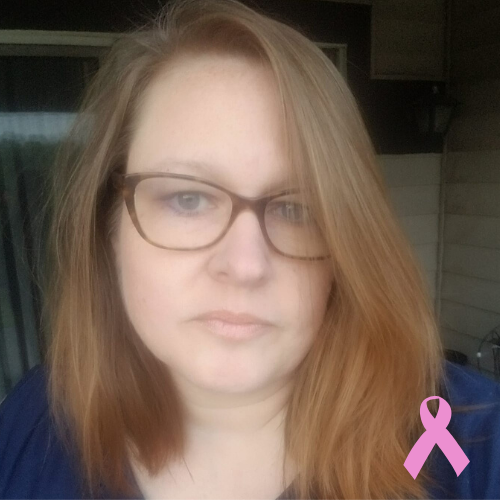Navigating Stage IV Cancer: Sherry’s Story
Though it originated in theatre, telling someone to ‘break a leg’ has become a colloquial way of wishing someone good luck. For Sherry Frazier, however, it was breaking her arm that brought good fortune. Prior to breaking her arm in September 2019, Sherry noticed a lump in her breast and was experiencing lower back pain. Ten years ago, the area in which she found the lump was determined to be fibrocystic. She and her doctor concluded that the newly emerged lump was likely fibrocystic, and the lower back pain could be attributed to an injury from several years ago. When Sherry presented with a broken arm, however, the radiologist noted that there was a lesion in her bone that may be cancerous.
“I was diagnosed at Stage IV,” Sherry reflected. “I couldn’t help but wonder how long I’ve had cancer. It was like I went from being healthy to having Stage IV cancer.”
While coping with the sheer shock of her diagnosis, Sherry’s doctor informed her that Stage IV, or metastatic, breast cancer meant that the cancer had spread outside of the breast to many of her bones as well as her liver. Though her cancer was identified at a relatively late stage, Sherry deemed herself lucky that it was caught at all.
“Because it’s no longer confined to just the breast, stage IV breast cancer is very different than other stages,” Sherry explained. “Screening and self-examinations are so important. I was shocked to learn how common metastatic cancer is in young women.”
Sherry was prescribed two pills to take daily, including an oral chemotherapy drug, and monthly injections and infusions. The injection was an anti-estrogen drug that chemically induced menopause and the infusion provided a bone strengthening medication.
“In the beginning, everything is overwhelming,” Sherry shared. “Between the amount of information given to you about your specific cancer and its treatment, and just trying to cope with the diagnosis itself, it is a lot to digest.”
Throughout all of the turbulence associated with cancer, Sherry continues to strive to put cancer in the back of her mind. Though she admits she can easily push the actual disease out of her thoughts, the financial and physical side effects are ever present.
“Even with decent health insurance, cancer is expensive,” Sherry stated. “The financial aspect and the fatigue have been really unexpected. I didn’t realize just how tired I would be all of the time. Even doing basic daily tasks is exhausting.”
As Sherry continues to receive treatment for breast cancer, she urges all women to perform regular breast self-examinations and receive regular mammograms when able. To self-examine one’s breasts, begin with a visual examination and conclude with a physical examination of the breast. Women should check for any lumps or bumps, puckering, dimpling, changes in size/shape/symmetry, or inverted nipples.
Some general tips to follow when examining one’s breasts include:
- Use the pads of fingers. Use the pads, not the very tips, of the three middle fingers for the exam. If it is difficult to feel with the finger pads, use another part of the hand that is more sensitive, such as the palm or the backs of the fingers.
- Use different pressure levels. The goal is to feel different depths of the breast by using different levels of pressure to feel all the breast tissue. Use light pressure to feel the tissue closest to the skin, medium pressure to feel a little deeper, and firm pressure to feel the tissue closest to the chest and ribs. Be sure to use each pressure level before moving on to the next spot.
- Go slow. Don’t rush. It may take several minutes to carefully examine breasts.
- Follow a pattern. Use a methodical technique to ensure examination of the entire breast. For instance, imagine the face of a clock over your breast or the slices of a pie. Begin near the collarbone and examine that section, moving the fingers toward the nipple. Then move the fingers to the next section.
The National Foundation for Cancer Research (NFCR) scientist of over 20 years, Susan B. Horwitz, PhD. has dedicated much of her career to the study of breast cancer. Dr. Horwitz is a molecular pharmacologist who studies how drugs work in the body and finding new anti-cancer treatments and approaches to stop resistance is her scientific passion.
She is well-known for her work surrounding the blockbuster cancer drug, Taxol. Her work enabled the successful translation of the drug into the clinic, and it is now one of the most frequently prescribed medications in the world for the treatment of breast cancer as well as ovarian and lung cancers.
Dr. Horwitz is also the 2020 awardee of NFCR’s Szent-Györgyi Prize for Progress in Cancer Research, for her pioneering work in the field. Learn more and support her lifesaving projects here.












